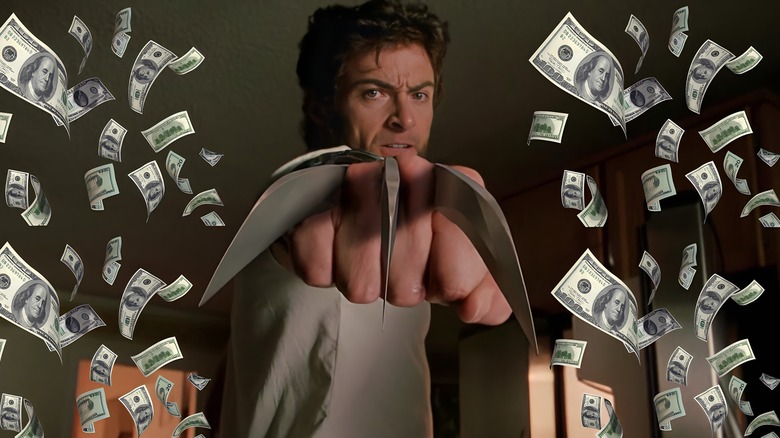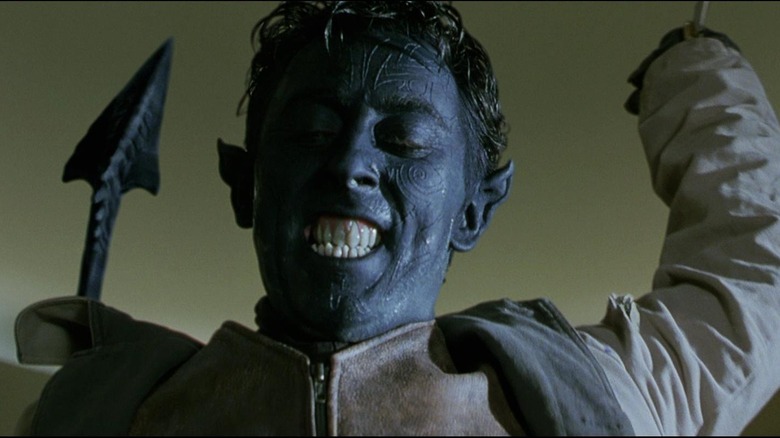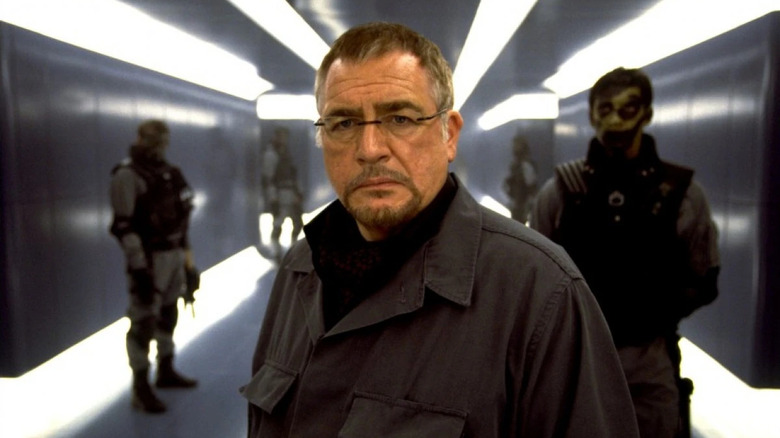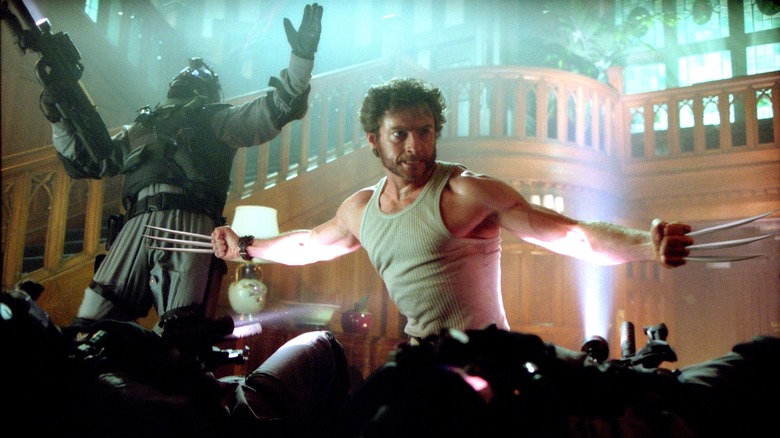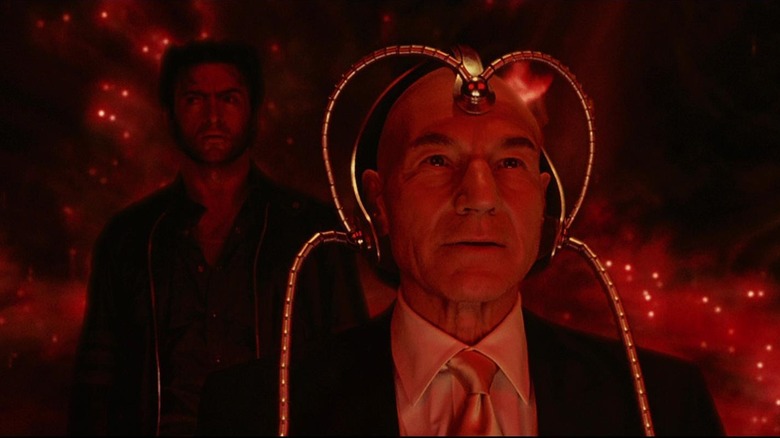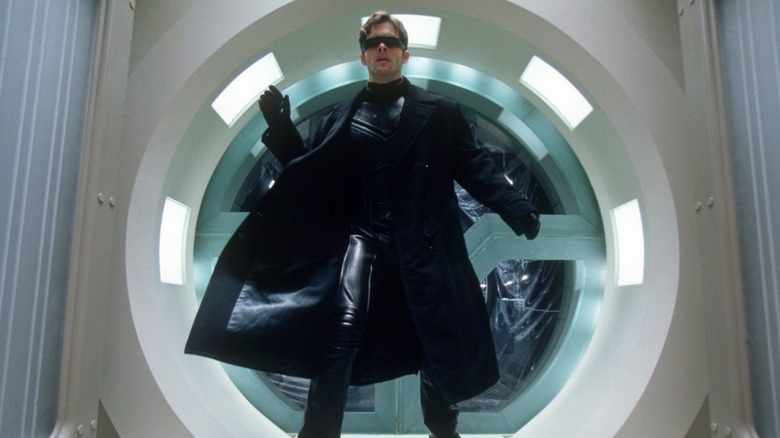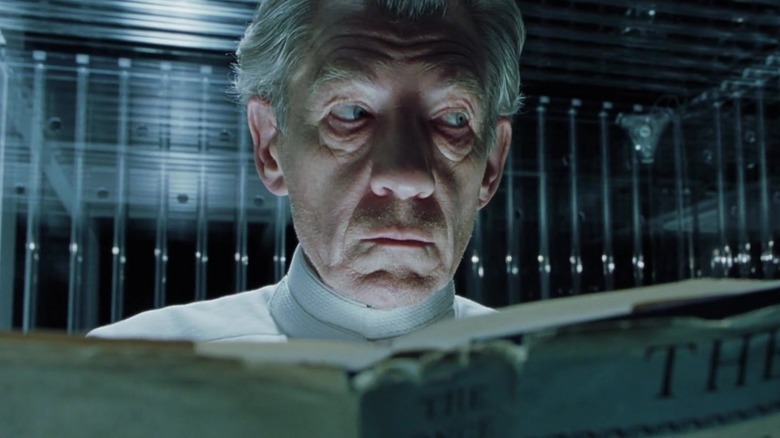Tales From The Box Office: 20 Years Ago, X2: X-Men United Raised The Bar For Superhero Movies
(Welcome to Tales from the Box Office, our column that examines box office miracles, disasters, and everything in between, as well as what we can learn from them.)
It is remarkably difficult to picture now, but there was a time when superhero movies were not the dominant force in Hollywood. They were, at best, a fluke when they worked. Marvel only gained its first mainstream hit with "Blade" in 1998 and, frankly, its $131 million global haul is very modest by modern standards. That movie, however, opened the door for 2000's "X-Men," which is arguably the watershed moment in superhero movie history, with "Spider-Man" blowing the door wide open in 2002.
"X-Men" taking in nearly $300 million worldwide against a $75 million budget gave 20th Century Fox confidence to move forward with a sequel almost right away, and that sequel would arrive in 2003 in the form of "X2," aka "X2: X-Men United." In every conceivable way, we are talking about a sequel that improved upon its predecessor. From its massive scope, bigger budget, larger cast, and yes, much larger take at the global box office, this was the best-case scenario that every studio hopes for in going bigger, hoping it will equal better. Two decades later, its status in raising the bar for future comic book adaptations simply cannot be ignored.
In honor of the movie's 20th anniversary, we're looking back at "X2," why Fox had some trouble getting it going as quickly as they would have liked, how nailing the script down became a bit of a problem, what happened during its record-breaking theatrical run, and what lessons we can learn from it all these years later. Let's dig in, shall we?
The movie: X2: X-Men United
Before diving in, the situation with director Bryan Singer must be addressed. Singer, who directed five of the "X-Men" films, has since been ousted from Hollywood following a huge string of sexual misconduct allegations and inappropriate behavior. In writing about this film, there is no divorcing it from Singer. But we're also not condoning or excusing any of his alleged behavior. With that out of the way, let's get to it.
Part of what set "X-Men" apart from other comic book movies before it is that very little in the film is tongue-in-cheek. Heck, the whole movie opens with Magneto at a concentration camp. It was a serious movie that treated the Marvel Comics source material with respect. That notion would only be furthered in "X2." While director Bryan Singer and the movie's various writers toyed over which storylines to look to for inspiration, they ultimately settled on Chris Claremont's beloved "God Loves, Man Kills," which was originally published in 1982.
The film as we know it centers on our new villain in William Stryker (Brian Cox), who has ties to Wolverine's (Hugh Jackman) past. Calls for a mutant registration act are reignited following an attack on the White House by Nightcrawler (Alan Cumming). Stryker assaults the X-Mansion and abducts Professor X. Magneto (Ian McKellen) then forms a reluctant partnership with the X-Men to defeat Stryker and his plans to destroy Mutantkind using Xavier's technology against his own people.
Settling on the storyline was no easy task. Ultimately, David Hayter and Zak Penn were credited with the screenplay, alongside Singer, though several uncredited rewrites did occur. Speaking with IGN in 2001 when things were still coming together, Hayter explained how they were assembling the script:
"We didn't write together, but we were working on the same treatment that Bryan [Singer] had approved. Both Zak [Penn] and I are big X-Men fans and we both came up with ideas. Now Bryan and I are working together on a final draft."
Nailing down the story
Bryan Singer and the writers went through lots and lots of ideas before settling on Chris Claremont's seminal '82 tale as the core inspiration, although, naturally, the film takes lots of liberties with the source material. Zak Penn explained in a 2018 career retrospective with The Hollywood Reporter that his greatest contribution to the film was to steer Singer away from the Dark Phoenix storyline, which would later be adapted in "X-Men: The Last Stand" (and again once more in 2019's "X-Men: Dark Phoenix"). Penn felt it was too early to pull the trigger on something that grand:
"On 'X2,' part of how I ended up getting the job on it was that originally that was going to be the Phoenix story. I just said ... 'You've built up this real universe and you should establish it more before you go into Phoenix.'"
What's clear, despite how well the movie turned out in the end, is that it went through many, many changes along the way. For one, various cameos and sequences were cut from the film. Gambit, the fan-favorite card-throwing Cajun who has yet to really get his day in the live-action spotlight, was originally supposed to have a cameo. Stuntman James Bamford, who was serving as Jackman's stunt double on set, played the role, an opportunity that came to be because he was injured in rehearsal. Bamford explained in April of 2003:
"I was given the part as Gambit by the director, basically for my look. I was working on the show as Wolverine's stunt double for rehearsals, and I was called in to be looked at for Gambit. I was on set the next day shooting the scene. I could not continue to double Wolverine on film because of a rehearsal injury. The scene that I was involved in as Gambit took only one day to shoot. It was a very small part, a cameo."
A much larger undertaking
Another thing that was clear from the jump is that the sequel would be a much larger undertaking from a production standpoint. To that end, the budget rose to a pretty hefty (by 2003 standards) $110 to $125 million. This included utilizing 64 different sets across 38 different locations. "We wanted the second film to have a bigger canvas, a bigger scale," cinematographer Newton Thomas Sigel said to American Cinematographer in April 2003. In that same piece, Singer spoke about his darker vision for the film:
"We take the story deeper and we get a bit darker [...] Whereas the first film established the universe and introduced the characters, this one uses the characters to tell the story. It's tough when you're introducing such a complex ensemble, and once you've done that it makes the second part more fun for the audience and the filmmakers. We weren't stuck having to [explain the characters and their superpowers]."
While films like Christopher Nolan's "The Dark Knight" would get a lot of credit for having a dark, gritty, and grounded take on superheroes in the years that followed, "X2" was very much ahead of the curve in that way. "For Bryan, it was important for the films to have a very classical, naturalistic look, and yet have an otherworldliness and also an energy that's very modern," Sigel said. "He did not want them to feel like comic books. In many ways, I think we're trying to make films that are closer to 'Road to Perdition' than, say, 'Gone in 60 Seconds.'"
Pushing the envelope
For all of the massive success that "Spider-Man" enjoyed, it was very much a family-friendly film in a lot of ways, with very PG-13 depictions of violence. Sam Raimi's vision of the Marvel universe also did feel very comic book-y (though that's not at all a bad thing). The "X-Men" universe, however, was going for gritty and grounded, which is why, controversially, the mutants wear leather suits that don't at all resemble their colorful uniforms from the comics.
The filmmakers really pushed the envelope on the gritty element with the follow-up. To that end, the MPAA actually handed the original cut an R rating. "We went up in front of the board and there were a few things they objected to, which we have cut out," producer Lauren Shuler Donner explained to CBR ahead of the release. Largely, it had to do with Wolverine's violent rampage during Stryker's assault on the X-Mansion. For what it's worth, the sequence as we see it in the film is not exactly restrained.
A larger budget also allowed for much better special effects that are more in line with what audiences have come to expect from modern superhero blockbusters. "I was disappointed with much of my work on the first 'X-Men,'" said VFX Supervisor Mike Fink in a chat with Sci-Fi Online ahead of the film's home video release. "So it was just a short hop to wanting to top what we had done before. Although there was some pressure from outside to do better, my own self-generated pressure was quite sufficient."
Safe to say, Fink succeeded and, with a PG-13 rating secured, audiences would have the chance to weigh in on whether or not this bigger, more expensive adventure was actually better.
The financial journey
Fox rolled out the red carpet in a big, bad way for "X2," with the film having the largest theatrical rollout of all time up to that point, playing on 3,741 screens in North America. Or, to put it another way, 62% of the available screens at the time. The rest of Hollywood, wisely, mostly steered clear of the Marvel sequel on its opening weekend, with only "The Lizzie McGuire Movie" opening against it, serving as a bit of counter-programming. In the end, it was absolutely no contest.
"X2" hit theaters on May 2, 2003, taking in a stellar $85.5 million in its chart-topping debut. "Lizzie McGuire" came in number two with $17.3 million. It wasn't even close. The following weekend, "Daddy Day Care" would also fail miserably to stop Marvel's mutants, as the sequel earned another $40 million, while the aforementioned comedy did $27.6 million. The following weekend, "The Matrix Reloaded" would end The X-Men's run atop the charts, but it didn't matter.
The film already secured the best international opening weekend for a Fox movie ever up to that point, finishing its run with $214.9 million domestically and $192.7 million internationally for a grand total of $407.7 million. Mind you, this was before China became a powerhouse moviegoing market, helping to goose the takes for Hollywood blockbusters in the years that followed. That total for a pretty damn dark movie was nothing shy of stellar, paving the way for a franchise that would continue on (albeit with befuddling continuity) until Disney purchased Fox in 2019.
The lessons contained within
To date, the "X-Men" franchise has taken in more than $6 billion worldwide, with even bigger hits to come in the years that followed such as "Days of Future Past" ($748 million worldwide) and "Deadpool" ($782 million worldwide). It's not a stretch to say that, without the success of "X2," R-rated superhero success stories such as "Deadpool" and, perhaps more importantly, "Logan," might not have been possible. This movie opened a lot of doors both for this franchise and superhero movies in general. Would we have gotten a dark and gritty "Batman Begins" without this movie proving that dark and gritty could work in a comic book movie on a mass scale? Maybe not.
Yes, "Spider-Man" made a lot more money but the one-two-punch of that movie's record-shattering success and this movie's much larger take compared to its predecessor without having to compromise on the "we're taking this very serious" nature of it all did a lot for the genre. To that end, a huge part of what works about "X2" to this day is the fact that it treats the source material with reverence. It's not scared of what was laid out in the comics, even if the outfits aren't as colorful. The spirit of the story is true to those beloved books.
Other movies that shied away from the source material have failed over the years. Look at "X-Men Origins: Wolverine" and what they did with Deadpool before he got a faithful adaptation in a solo movie. For whatever success superhero movies have enjoyed over the last two decades, this movie is owed its share of credit. Watching this movie now, 20 years later, it doesn't suffer from feeling too dated. It still packs a punch, and that's impressive. At the time? It felt revolutionary and was rewarded greatly for it.
